Building Green: How to Plan Your Site for Healthier Living
http://decor-ideas.org 07/15/2015 20:13 Decor Ideas
In the first installment of the Building Green series, we looked at how you and your community can contribute to healthier environments by making choices that ultimately benefit you and your neighborhood. In this article we’ll focus on what to consider for your site, or your parcel of land, to support a healthier ecosystem where you live.
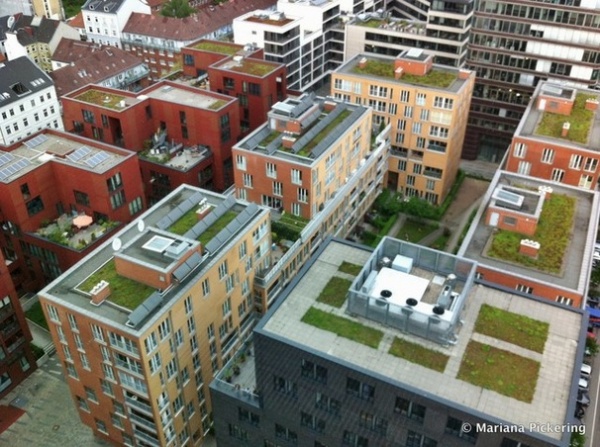
In this photo from Hamburg, Germany, vegetated rooftops are clearly visible in the urban jungle. Naturally landscaped rooftops are one of several site conditions that can help us achieve a better balance with the planet.
The Heat Island Effect
Possibly you have heard of the phenomenon known as the heat island effect. This occurs when the built environment of a city causes the average temperature of its microclimate to be higher than what it would have been had the city not existed. The increased temperatures can cause heat waves to be more intense, unbearable and even dangerous in the most extreme cases. Weather on the windward side of a heat island even generates more precipitation than would naturally occur.
Urban planners and building designers have studied this situation and come up with ideas that should help bring temperatures closer to their natural state if they are implemented throughout a region. It’s obvious that more vegetation, whether trees or rooftop gardens, helps. Also, since dark colors absorb more heat than light colors, asphalt and other dark paving materials as well as dark roofing materials exacerbate the problem. Lighter shaded roofing and paving materials reflect heat better and are a better choice, helping to reduce the heat island effect.
4 Ways Green Roofs Help Manage Stormwater
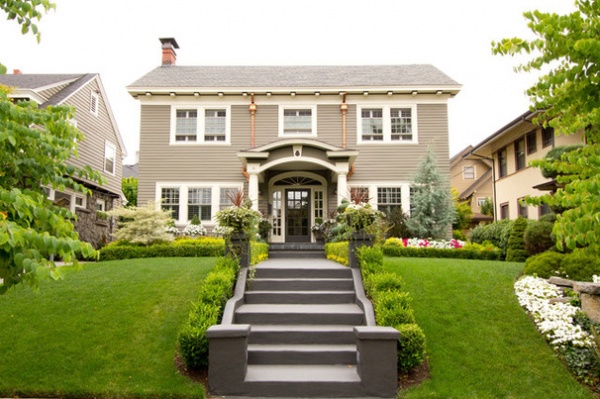
Evaluate Your Construction Footprint
One of the first things to consider when you are building a new house or a significant addition is the footprint of the house, as well as any landscape that will be overturned and modified in the process. It’s elementary that the less you disturb, the better. The classic two-story Colonial Revival house, like the one above, is very efficient with its rectangular shape, which also efficiently places half of the house above the ground.
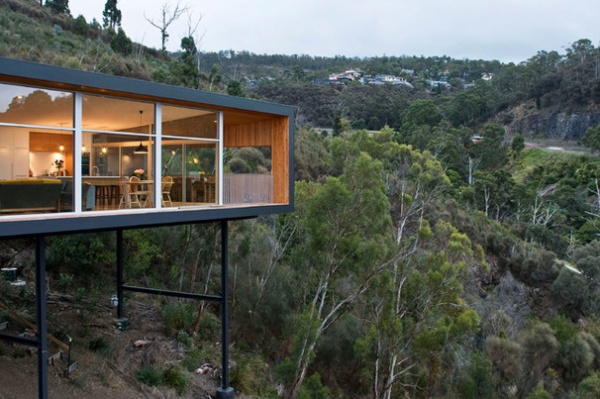
Another solution could be to float the house above the landscape, as seen in this Australian residence. The strong, minimalist steel frame holds the structure, piercing the earth in just a few key points. This reduces site disturbance, compared with excavating into a hillside, which is almost always costlier.
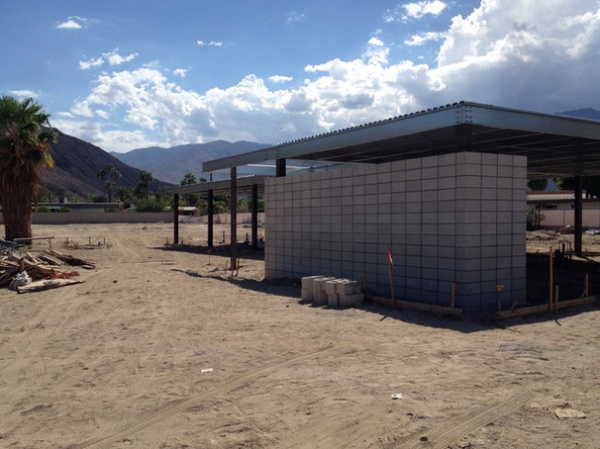
Jobsite Waste Diversion
Any construction zone is going to produce waste material. Our challenge is to reduce the amount by building with materials that do not produce as much waste for landfills. Limiting the use of wood framing and wooden products can help, since cutting and trimming leave behind significant waste. Rather than having a roof framed conventionally, you can have it built with trusses. Trusses are made offsite in facilities designed to minimize wood consumption.
You can choose a type of modular construction as well. Panelized systems or packages that produce sections of houses in factories can be shipped to a site and then assembled. You can also use other building materials, such as steel and concrete block, as has been done in the Palm Springs, California, house above. Building waste material can be recycled in some cases, but this is not the best solution, as transporting heavy materials increases the carbon footprint.
10 Things to Know About Prefab Homes

Recycled Site Materials
Another way to keep material out of landfills is to recycle your house for your use. For example, you may be building an addition over your old patio. The patio may have to go, but using its broken-up concrete for another purpose somewhere in your landscape could give you a special feature otherwise not even available. The lovely path above was created with broken-up concrete and bricks.
Also, it wasn’t so long ago that stone cladding was quarried right on the site where a structure was built. If you are building on a generous parcel in the country, perhaps you could quarry your own material. Historically, Spanish clay tiles were formed on the knees of workers out of mud from the building site.
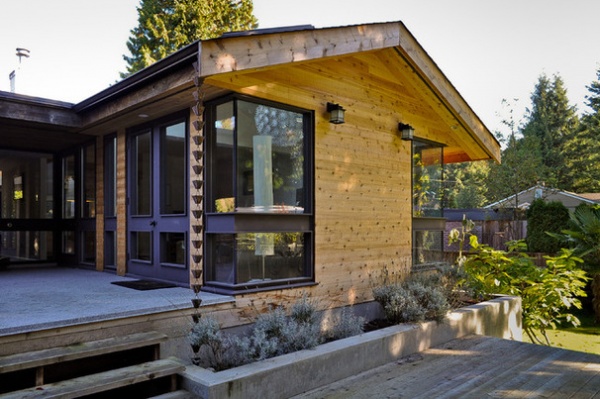
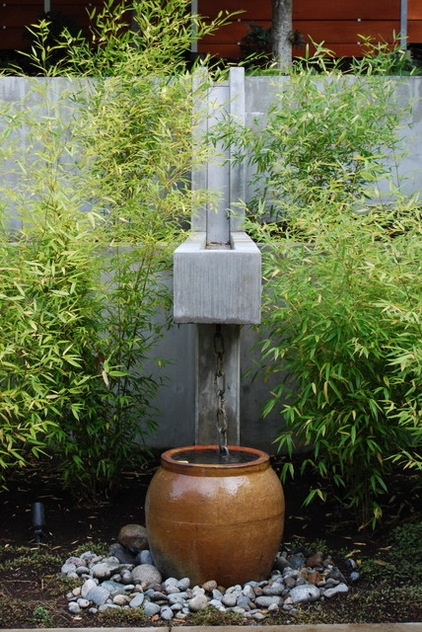
Erosion and Drainage
Controlling water runoff and erosion is just as much of a concern in dry climates as it is in wet ones. Consider that the typical suburban development alters the landscape significantly, because water that was once simply absorbed into the natural landscape is now draining off rooftops, into gutters and then into stormwater systems. Ultimately, it makes its way to creeks, streams and rivers before reaching lakes and oceans, though far more quickly. Water tables drop, because absorption is reduced.
Delightful and creative solutions can help to solve this problem by diverting water runoff to places where it is needed and adequately absorbed into the surrounding landscape. Downspouts don’t have to be unsightly aluminum tubes. The Canadian residence above employs a charming chain of metal cups that hold and slowly drip the water to the planter bed below. In the photo at left, runnels channel water to clay pots that then overflow to a bed of rocks that helps disperse the fluid.
Soak It Up: How to Manage Stormwater in Your Landscape
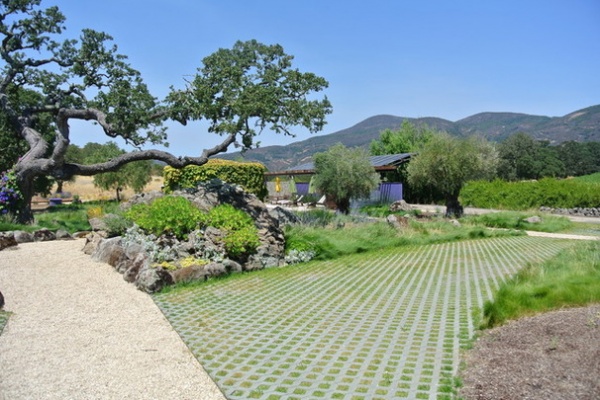
Permeable Paving
Permeable driveways and patios are better than large sections of concrete and asphalt for controlling runoff and erosion. Flagstone laid over sand to create a patio allows the area to absorb some moisture. The permeable driveway above has a modern system that allows greenery to mix with the surface material, creating an interesting pattern while being a healthier option.
Permeable Paving Soaks Up Rain
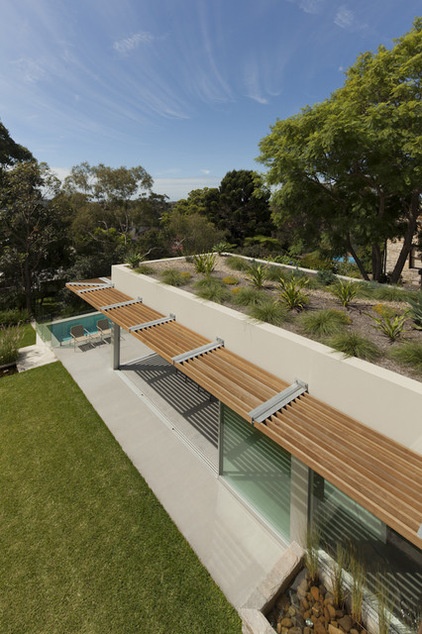
Environmental Quality Management Plans, Including Indoor Air Quality
Construction businesses that are on the cutting edge are implementing environmental quality management plans and indoor air quality assessments to ensure that their projects do not produce or emit harmful substances into the site or environment during or after the building process. There is even a process called a flush-out. It is implemented at the conclusion of construction and is designed to eliminate fumes and odors from newly placed building materials.
This renovated Sydney, Australia, residence is a superb example of a planted roof system. Other than that the area on top of the house with vegetation, all else appears as it would have otherwise.
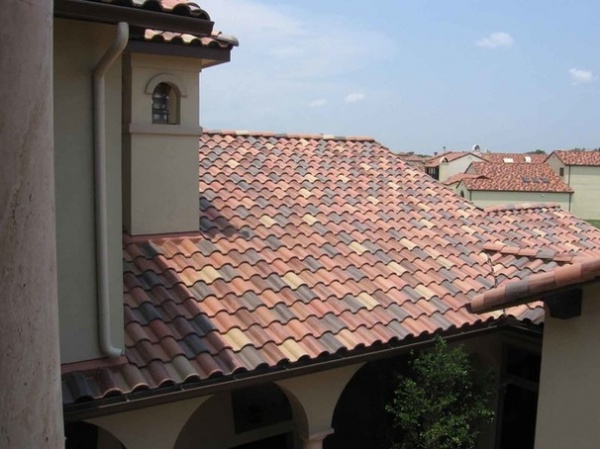
Roofing Materials
Clay tiles and those with cement added to the natural clay mixture are one of the better choices for roofing materials. They last a long time and do not leach harmful toxins, as asphalt shingles do. Lighter colors are best.
Your budget will help determine your choice as well. Less expensive options, unfortunately, tend to be less environmentally clean. Look over the chart below to get a sense of which roofing material choices could be suitable for you. The higher the total score, the better the material is for the environment.
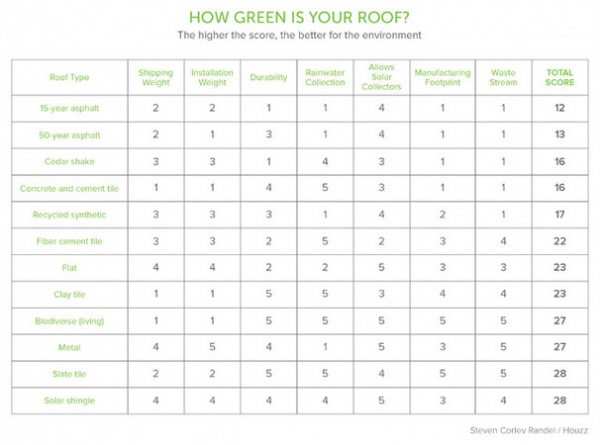
The Higher the Number, the Greener the Roof
Examine the roofing choices in the chart above. They are rated on a scale of 1 to 5, with 5 being the best. You will want to carefully consider the implications of each category listed in the chart. These figures are based on my own discretion and are for simplified explanation. As mentioned, choose roofing materials as light in color as possible to counter the heat island effect. Your architect and general contractor can give you more specific recommendations.
You should carefully weigh these seven characteristics to make an informed decision about which roofing material is best for you and the environment.
Shipping weight. The lighter the material, the better. A heavy product requires more energy to transport.Installation weight. A heavier material requires more structural support; the lighter the material, the better.Durability. Consider longevity. Slate can last more than a hundred years, which is preferable to 15-year asphalt.Rainwater collection. Leaching of toxic chemicals is a concern. Asphalt is the worst, and slate is the best.Allows solar collectors. Installing solar collectors is easier on some materials than others.Manufacturing footprint. Consider whether chemicals and petroleum are used to produce the material.Waste stream. Will the material last a lifetime, is it recyclable and, if not, where will it end up?
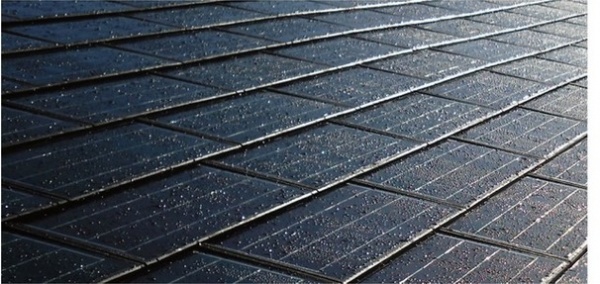
Dow Powerhouse Solar ShinglesSolar Energy From the Roof
The cost of solar collectors has been falling significantly each year. Pictured above are tile collectors, another roofing choice. Slate, metal roofing, solar shingles and a biodiverse roof, as illustrated in the Sydney house above, are the healthiest choices for the environment.
You must also consider that transport of materials consumes energy. If at all possible, choose local materials, especially if they are heavy. Modern shipping efficiency has made many materials more affordable and accessible. However, the ships, trains and trucks needed to transport them probably operate on fossil fuels. Be mindful of your choices. If you must have marble from Italy for your master bath, make up for it by using a locally sourced roofing material, for example.
These are a few aspects of more conscientious building. There are other choices that will help you build a healthier site. Investigate them with a professional, and you will optimize your project.
More:
Going Solar at Home: Solar Panel Basics
Building Green: How Your Home Ties Into Its Community
Related Articles Recommended












